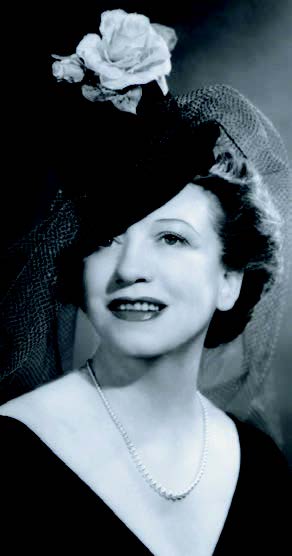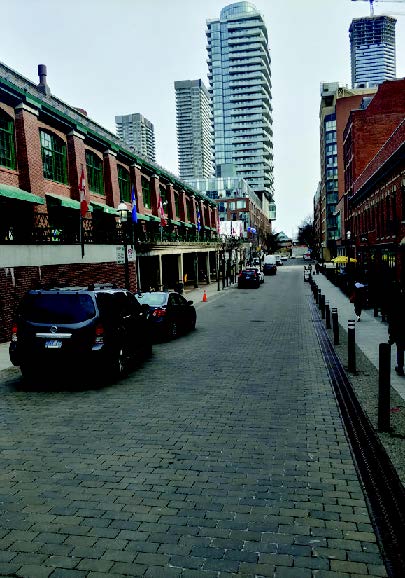By Bruce Bell, History Columnist
–
One of my favourite legends involving St. Lawrence Market is about a very determined five-year-old girl with the unlikely name of Florence Nightingale Graham, who helped her father, a farmer from Woodbridge, sell his goods at the market in the 1890s.
Standing amongst the squealing pigs, noisy chickens and barrels of carrots, this little girl was thrilled to be part of the hustle and bustle, learning most of all the art of making a deal. In this vibrant market the seed was planted that eventually propelled the precocious youngster to become one of the wealthiest women in the world, helming a vast cosmetics empire known today as Elizabeth Arden.
Born on December 31, 1884, in Woodbridge, Florence attended then dropped out of nursing school after working a few seasons at St. Lawrence Market.
In 1909 she joined her brother in Manhattan, New York, taking a job as a bookkeeper for the E.R. Squibb Pharmaceuticals Company. There Florence learned about skincare and eventually got a job with Eleanor Adair, an early beauty culturist (forerunner to the modern esthetician), as a ‘treatment girl’.
In 1909 Florence formed a partnership with Elizabeth Hubbard, another treatment girl. After the partnership dissolved, she took on the name Elizabeth Arden, using Hubbard’s first name with the last name from Alfred Tennyson’s poem “Enoch Arden.”
Her brother lent the newly reborn Elizabeth Arden $6,000 to set up her first salon on Manhattan’s Fifth Avenue. Her beauty parlor, unlike others of the day, made the beauty business respectable for the everyday woman despite it being pricey; actually, that was part of its appeal.
In the late 19th and early 20th century, face makeup and beauty products were mostly used by actresses, showgirls and prostitutes; rarely by the general population. Coming from Victorian times, a woman’s chastity was her most cherished asset. A clean porcelain-like face free of greasy face paint except tiniest amount of blush was a reflection of her modesty.
With the death of Queen Victoria in 1901 and the more stylish Edwardian Age before the First World War, a ‘painted face’ became a bit more acceptable to the fashion-conscious women of the upper classes – but still considered a tad scandalous if worn during the day.
A woman who ran her own business was also rare in the 19th century. Nevertheless, only two years after opening his massive department store at Queen and Yonge, Robert Simpson died in 1897, leaving his wife Mary and daughter Margaret to run the company.
In this era, women couldn’t vote and weren’t considered ‘persons’, so managing a company was difficult even for the most formidable females.
Most salesmen claimed to be ‘uncomfortable’ dealing with women in business. Into this extremely patriarchal environment Elizabeth Arden succeeded like no other woman or man before her. Her timing was perfect when she started her beauty enterprise, as women were demanding more freedoms.
And she understood what women wanted, which her male counterparts didn’t. With the help of a chemist friend, Arden invented a game-changing face cream for the everyday woman. Rich, fluffy, lightly perfumed and in an elegant package, her Venetian Crème engendered a line of Venetian skin care products.
Arden also started to use the word ‘salon’ rather than the folksy-sounding ‘parlor’. To make her Fifth Avenue salon stand out amongst hundreds of other businesses in the area, she had its front door painted bright red.
By the 1930s, the name Elizabeth Arden was as famous as Singer Sewing Machines and Coca-Cola. At her business height, Elizabeth Arden owned more than 100 salons in Europe and North America; her name became synonymous with cosmetics .
Her short time selling carrots and corn husks at St. Lawrence Market may have started Florence Nightingale Graham on the road to success, but her farming past in Woodbridge gave her a lifelong love of animals.
One of her friends said, “She treated women like horses, and horses like women,” for she used her own high-end beauty products instead of commercial horse liniment on her beloved animals. In 1947 one of her horses, Jet Pilot, won the 1947 Kentucky Derby, making Arden the first woman owner to win and putting her on the cover of TIME magazine.
Elizabeth Arden died at the age of 82 in Manhattan on October 18, 1966. And it all began where St. Lawrence’s new North Market, set to open soon, stands at Front and Jarvis Streets.
***
I’m back doing walking tours of Old Town Toronto and other areas. For information or to book a tour, contact me at www.brucebelltours.ca.




